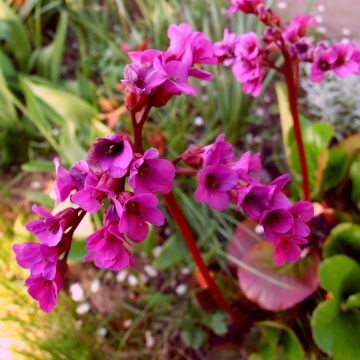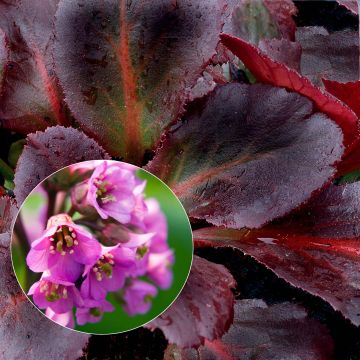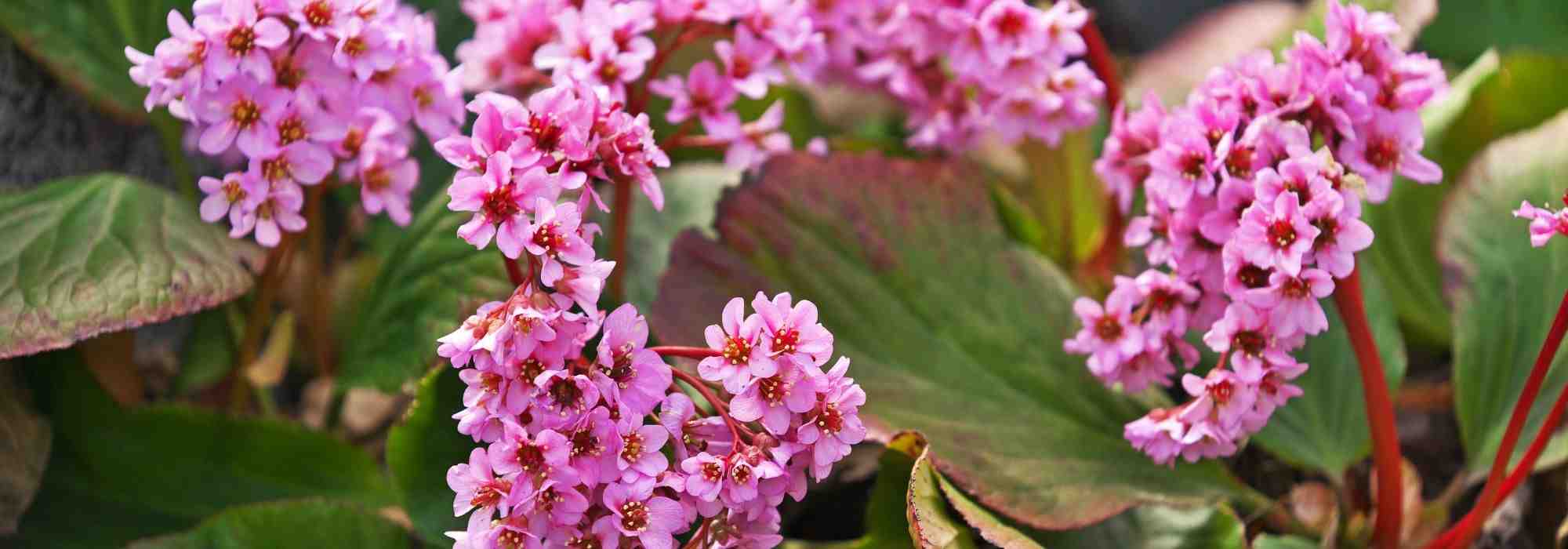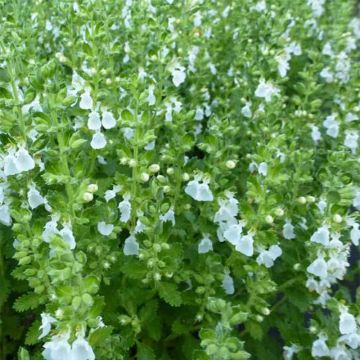

Bergenia milesii - Elephant's Ears


Bergenia milesii - Elephant's Ears


Bergenia milesii - Elephant's Ears


Bergenia milesii - Elephant's Ears
Bergenia milesii - Elephant's Ears
Bergenia stracheyi
Strachey's Bergenia, Himalayan Bergenia
Special offer!
Receive a €20 voucher for any order over €90 (excluding delivery costs, credit notes, and plastic-free options)!
1- Add your favorite plants to your cart.
2- Once you have reached €90, confirm your order (you can even choose the delivery date!).
3- As soon as your order is shipped, you will receive an email containing your voucher code, valid for 3 months (90 days).
Your voucher is unique and can only be used once, for any order with a minimum value of €20, excluding delivery costs.
Can be combined with other current offers, non-divisible and non-refundable.
Why not try an alternative variety in stock?
View all →This plant carries a 12 months recovery warranty
More information
We guarantee the quality of our plants for a full growing cycle, and will replace at our expense any plant that fails to recover under normal climatic and planting conditions.
Would this plant suit my garden?
Set up your Plantfit profile →
Description
Bergenia milesii is an evergreen species of small size, native to the mountains of Central Asia. However, over time, it forms extensive clumps with bright green and shiny leaves of modest size, which turn purple in winter. In early spring, it displays gracefully arching clusters of pale pink to white flowers. It is a hardy and resistant perennial, which tolerates ordinary soil that is not too dry. While this species tolerates the sun better, it still prefers a semi-shaded exposure, especially in hot climates.
Bergenia milesii is a herbaceous perennial plant of the Saxifrage family. This species is found in the mountains of Central Asia, in the western Himalayas, at an altitude between 2700 and 4700m (8858 and 15420ft), but also in Afghanistan and Tajikistan. It grows there in colonies, descending rocky and humid slopes even at very high altitudes.
It is an evergreen plant that reaches a height of 15cm (6in), with a creeping habit and vegetation gathered in tight clumps. It grows on a thick, large, and sheathed rhizome at the base of the leaves. Over time, this plant spreads, but its growth is so slow that it can hardly be considered invasive. Secondary stems appear here and there, eventually forming a beautiful carpet. The small, persistent, leathery leaves are arranged in rosettes and are shiny and glossy, with a very bright green colour in spring and summer. They are thick, of modest size, ovate in shape, notched at the base, crenate, and bordered with hairs. They are very attractive in autumn when they turn red. The flowers, which hang down towards the ground, are grouped in 20cm (8in) tall panicles. Their colour varies in nature from white ('Alba' variety) to pale pink to deep pink. They appear at the end of winter but bloom in early spring, in March-April.
Bergenias are perennials with great longevity and good adaptability, capable of living for decades without care. We have planted them in rock gardens, along riverbanks, in the sun, in shade, in dry or moist soil. The evergreen foliage takes on remarkable tones in some varieties. Bergenia milesii will grow well in most soils, but a rich, humus-rich, and moist soil is preferable. Very dry soils tend to limit its growth. It thrives in shade, semi-shade, or a sunny but not scorching position: dense shade, where it does not flower, and strong sun should be avoided. Cold and poor soils enhance its colors. If you are looking for an elegant and sturdy small Bergenias to brighten up the dreary winter days, look no further than this bergenia. It can be advantageously used in pots, rock gardens, borders, as a ground cover, or at the base of deciduous shrubs that allow winter sunlight but protect it from summer heat. It can be associated with perennial geraniums (Geranium macrorrhizum), primroses, and in woodland areas with oriental Hellebores, hostas, and Rodgersias to border a path.
Bergenia milesii and its varieties, like most Bergenias, are not afraid of snow. In nature, this plant only grows where snow is abundant in winter, as it provides excellent protection for the foliage. The leaves of this species are used by indigenous populations to make an infusion, but also as a source of tanning agents.
Bergenia milesii - Elephant's Ears in pictures






Flowering
Foliage
Plant habit
Botanical data
Bergenia
stracheyi
Saxifragaceae
Strachey's Bergenia, Himalayan Bergenia
Central Asia
Other Bergenia
View all →Planting and care
Bergenia milesii will grow well in most soils, but a soil rich in humus and moist is preferable. Dry soils tend to inhibit the growth of the plant. It will thrive in shade, partial shade or sunny but not scorching positions: dense shade should be avoided as it does not flower, as well as strong sun exposure. Cold and poor soils enhance its colours. Clumps can be planted in spring or autumn, with a spacing of 40 to 50cm (16 to 20in). To propagate, rhizomes can be divided at the end of winter. While a good fertilizer is beneficial for the growth of this plant, care should be taken not to overly enrich the soil with nitrogen to facilitate flowering. Remove all faded leaves in spring, apply balanced fertilizer after flowering to encourage new shoots. Monitor the appearance of slugs and snails in spring.
Planting period
Intended location
Care
Planting & care advice
This item has not been reviewed yet - be the first to leave a review about it.
Similar products
Haven't found what you were looking for?
Hardiness is the lowest winter temperature a plant can endure without suffering serious damage or even dying. However, hardiness is affected by location (a sheltered area, such as a patio), protection (winter cover) and soil type (hardiness is improved by well-drained soil).

Photo Sharing Terms & Conditions
In order to encourage gardeners to interact and share their experiences, Promesse de fleurs offers various media enabling content to be uploaded onto its Site - in particular via the ‘Photo sharing’ module.
The User agrees to refrain from:
- Posting any content that is illegal, prejudicial, insulting, racist, inciteful to hatred, revisionist, contrary to public decency, that infringes on privacy or on the privacy rights of third parties, in particular the publicity rights of persons and goods, intellectual property rights, or the right to privacy.
- Submitting content on behalf of a third party;
- Impersonate the identity of a third party and/or publish any personal information about a third party;
In general, the User undertakes to refrain from any unethical behaviour.
All Content (in particular text, comments, files, images, photos, videos, creative works, etc.), which may be subject to property or intellectual property rights, image or other private rights, shall remain the property of the User, subject to the limited rights granted by the terms of the licence granted by Promesse de fleurs as stated below. Users are at liberty to publish or not to publish such Content on the Site, notably via the ‘Photo Sharing’ facility, and accept that this Content shall be made public and freely accessible, notably on the Internet.
Users further acknowledge, undertake to have ,and guarantee that they hold all necessary rights and permissions to publish such material on the Site, in particular with regard to the legislation in force pertaining to any privacy, property, intellectual property, image, or contractual rights, or rights of any other nature. By publishing such Content on the Site, Users acknowledge accepting full liability as publishers of the Content within the meaning of the law, and grant Promesse de fleurs, free of charge, an inclusive, worldwide licence for the said Content for the entire duration of its publication, including all reproduction, representation, up/downloading, displaying, performing, transmission, and storage rights.
Users also grant permission for their name to be linked to the Content and accept that this link may not always be made available.
By engaging in posting material, Users consent to their Content becoming automatically accessible on the Internet, in particular on other sites and/or blogs and/or web pages of the Promesse de fleurs site, including in particular social pages and the Promesse de fleurs catalogue.
Users may secure the removal of entrusted content free of charge by issuing a simple request via our contact form.
The flowering period indicated on our website applies to countries and regions located in USDA zone 8 (France, the United Kingdom, Ireland, the Netherlands, etc.)
It will vary according to where you live:
- In zones 9 to 10 (Italy, Spain, Greece, etc.), flowering will occur about 2 to 4 weeks earlier.
- In zones 6 to 7 (Germany, Poland, Slovenia, and lower mountainous regions), flowering will be delayed by 2 to 3 weeks.
- In zone 5 (Central Europe, Scandinavia), blooming will be delayed by 3 to 5 weeks.
In temperate climates, pruning of spring-flowering shrubs (forsythia, spireas, etc.) should be done just after flowering.
Pruning of summer-flowering shrubs (Indian Lilac, Perovskia, etc.) can be done in winter or spring.
In cold regions as well as with frost-sensitive plants, avoid pruning too early when severe frosts may still occur.
The planting period indicated on our website applies to countries and regions located in USDA zone 8 (France, United Kingdom, Ireland, Netherlands).
It will vary according to where you live:
- In Mediterranean zones (Marseille, Madrid, Milan, etc.), autumn and winter are the best planting periods.
- In continental zones (Strasbourg, Munich, Vienna, etc.), delay planting by 2 to 3 weeks in spring and bring it forward by 2 to 4 weeks in autumn.
- In mountainous regions (the Alps, Pyrenees, Carpathians, etc.), it is best to plant in late spring (May-June) or late summer (August-September).
The harvesting period indicated on our website applies to countries and regions in USDA zone 8 (France, England, Ireland, the Netherlands).
In colder areas (Scandinavia, Poland, Austria...) fruit and vegetable harvests are likely to be delayed by 3-4 weeks.
In warmer areas (Italy, Spain, Greece, etc.), harvesting will probably take place earlier, depending on weather conditions.
The sowing periods indicated on our website apply to countries and regions within USDA Zone 8 (France, UK, Ireland, Netherlands).
In colder areas (Scandinavia, Poland, Austria...), delay any outdoor sowing by 3-4 weeks, or sow under glass.
In warmer climes (Italy, Spain, Greece, etc.), bring outdoor sowing forward by a few weeks.
































































